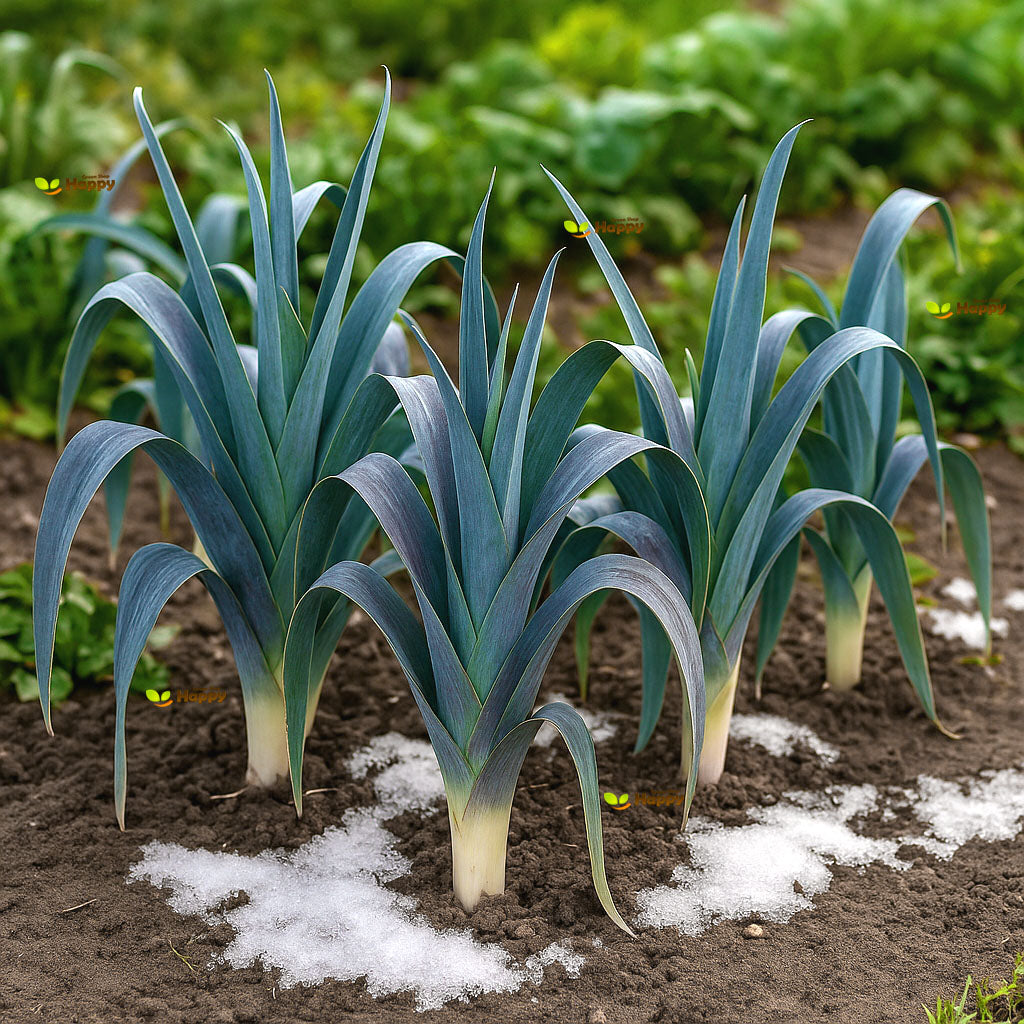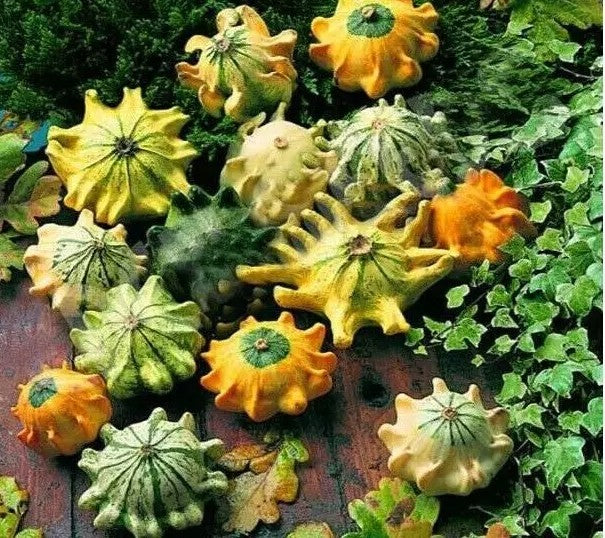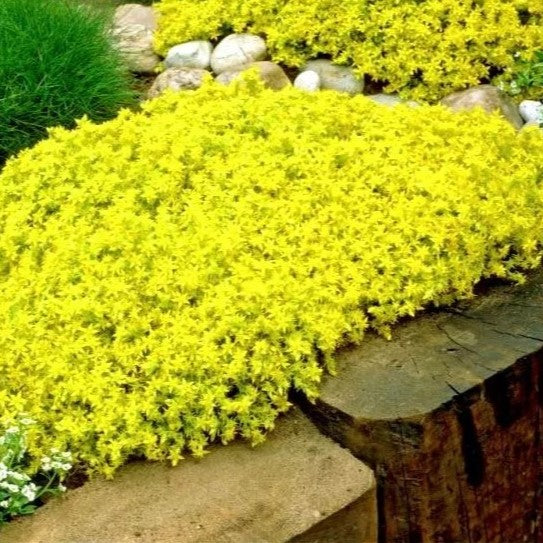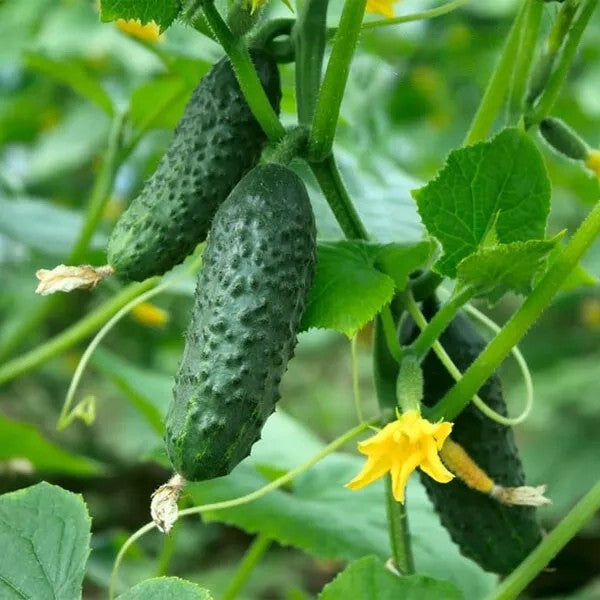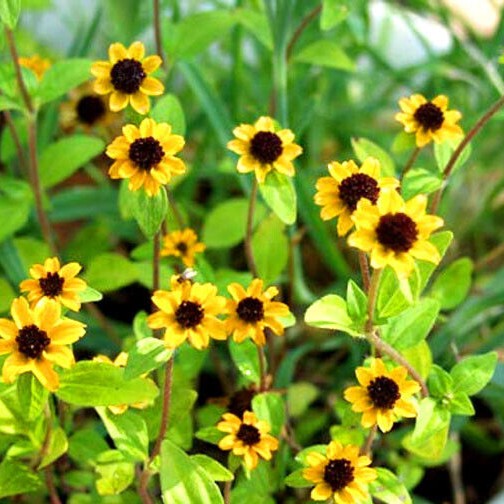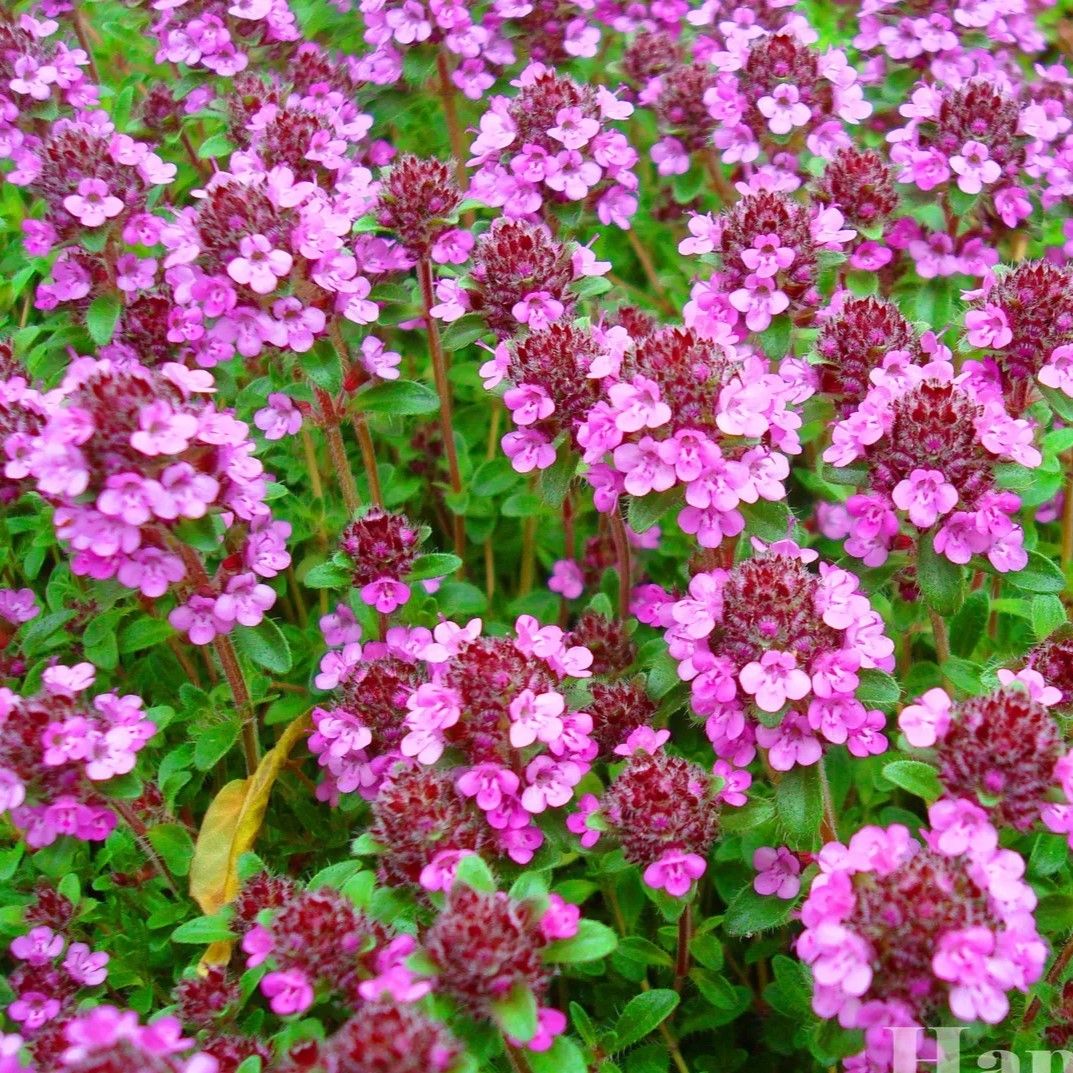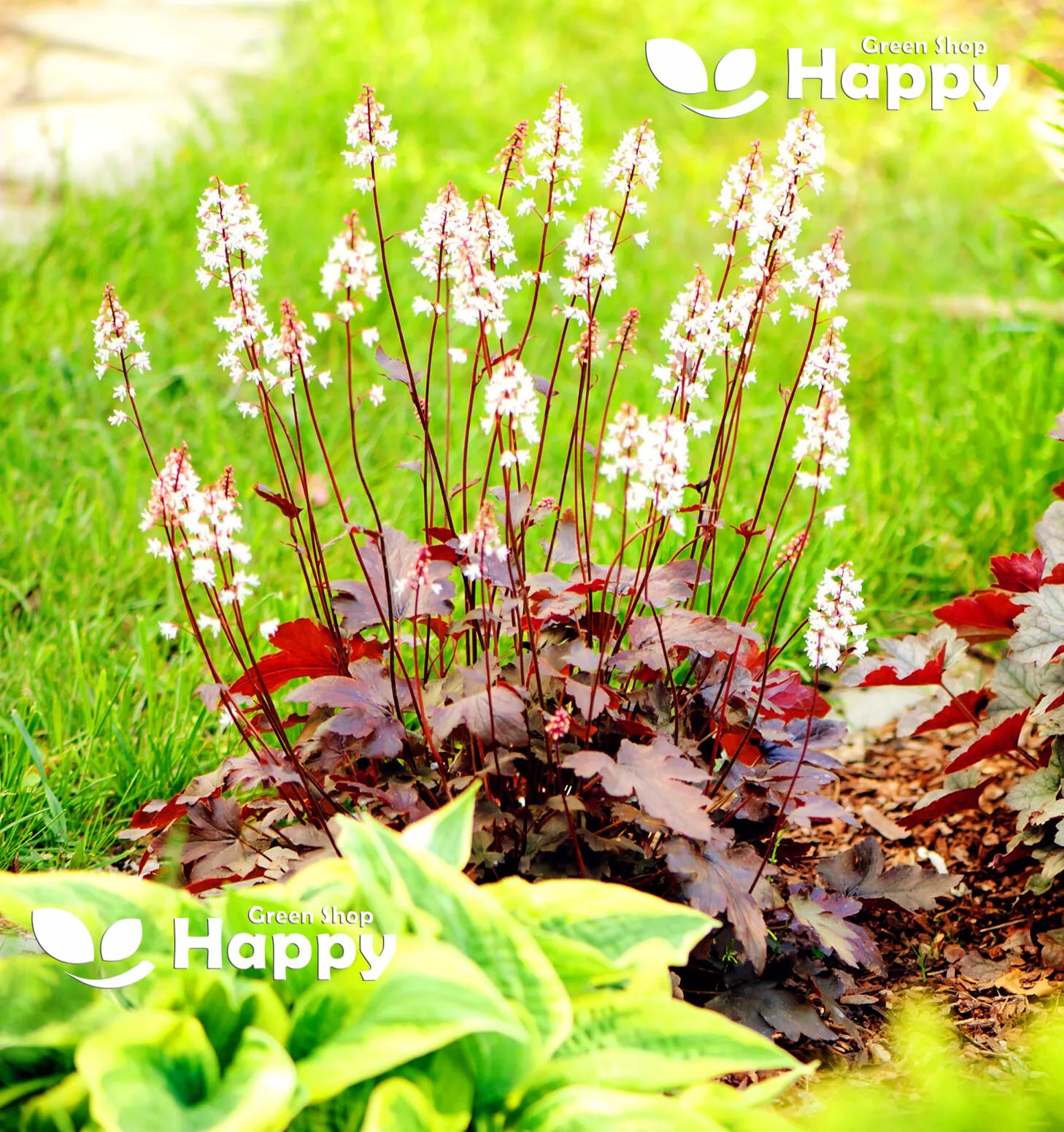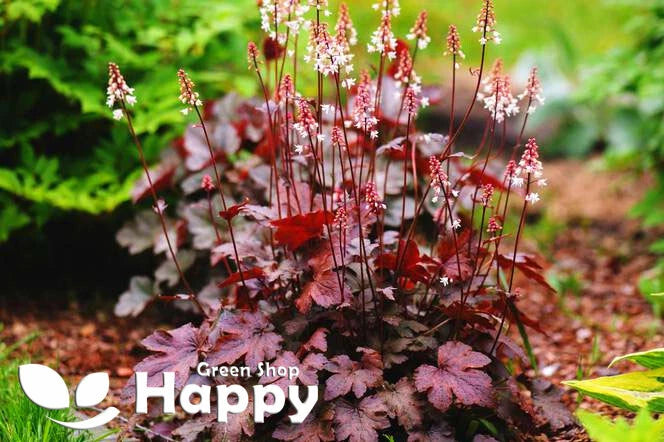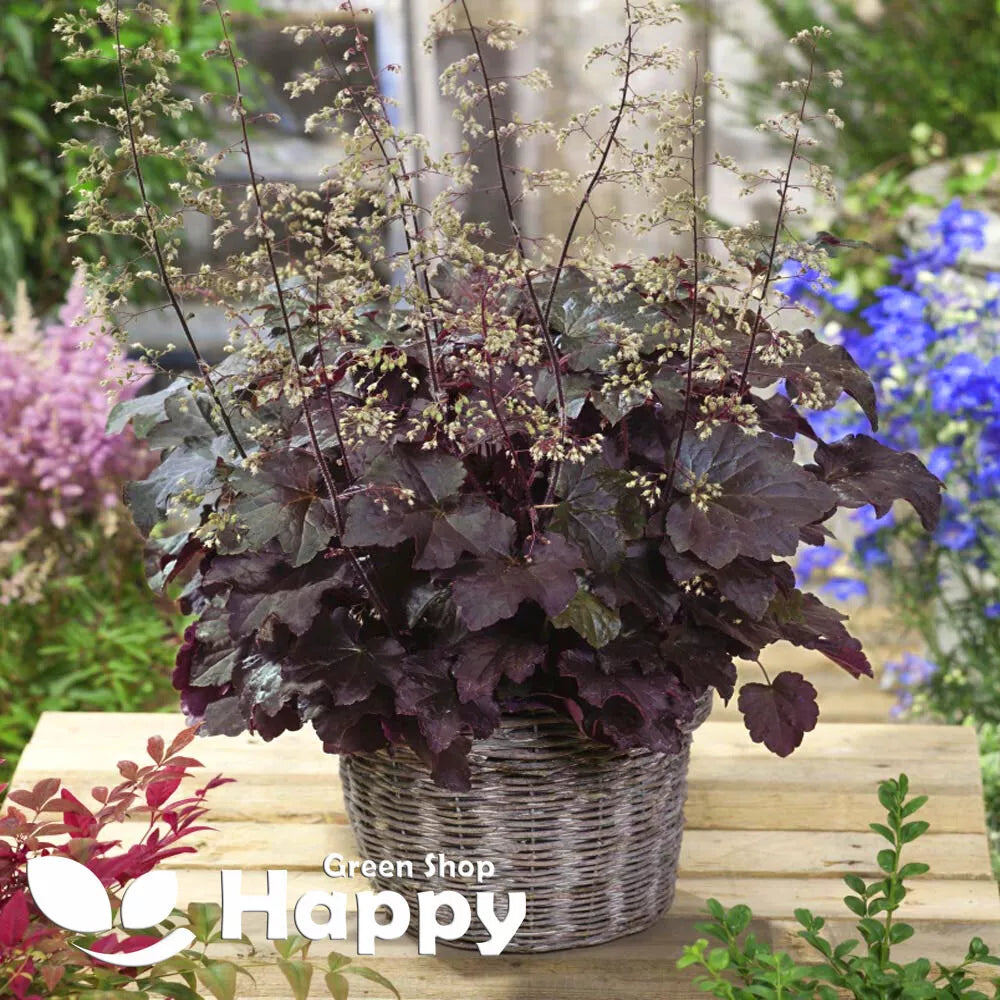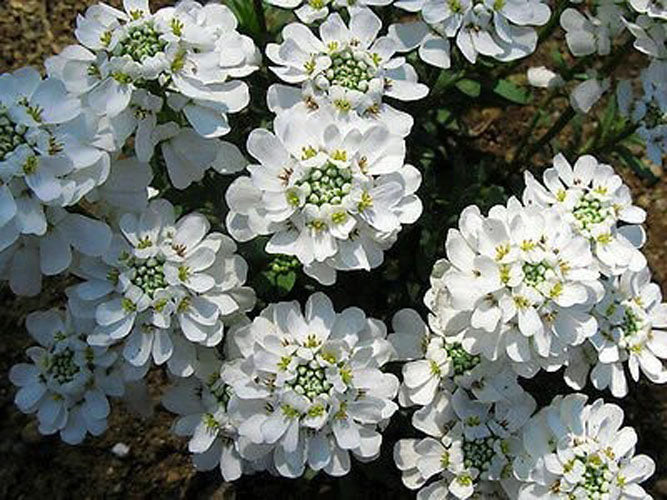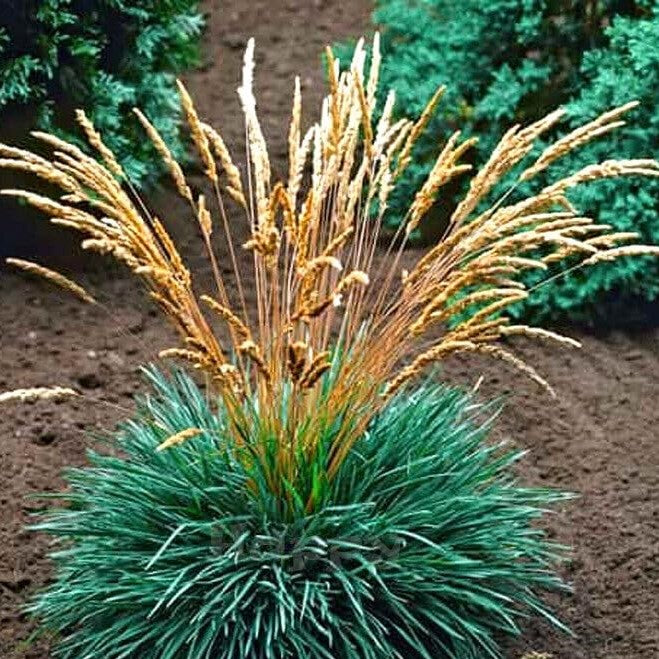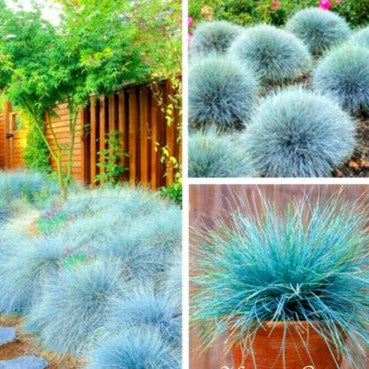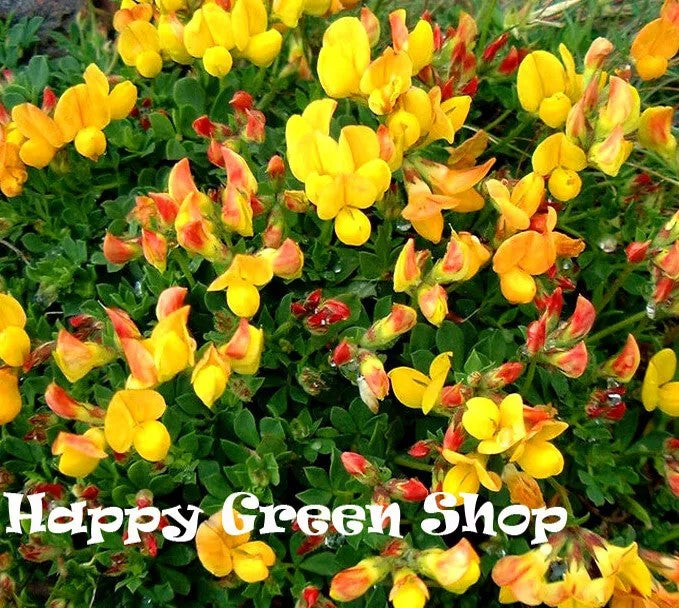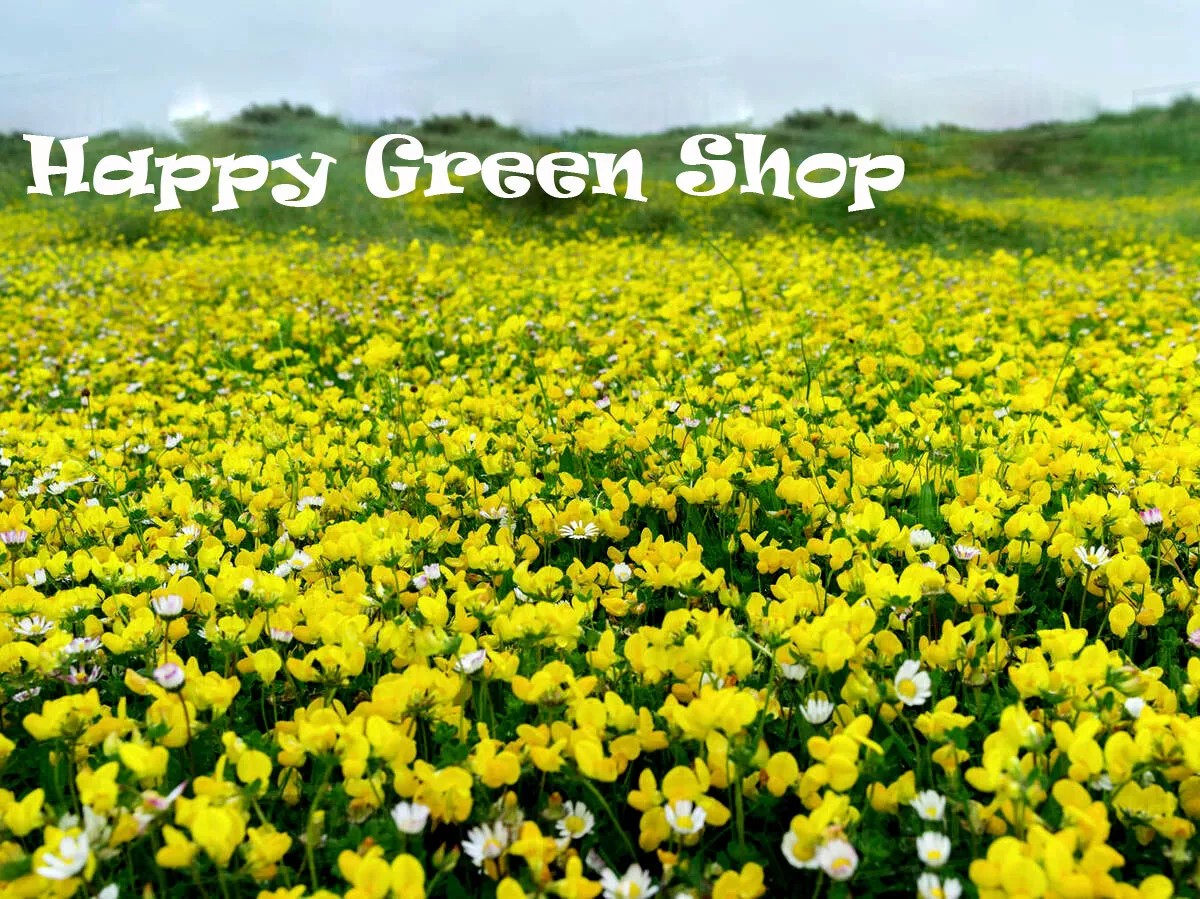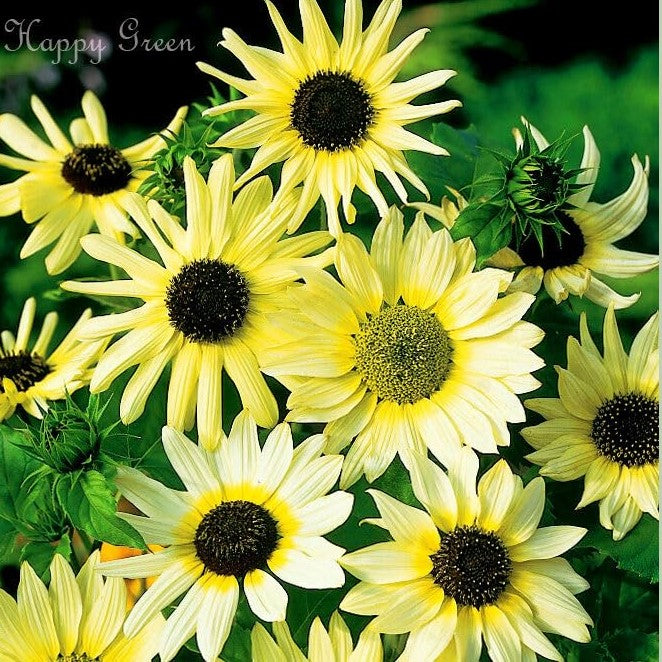Sort by:
51 products
51 products
Cucumber 'Piccolo Di Parigi' – Seeds (Cucumis sativus)
Cucumber 'Piccolo Di Parigi' is a compact, early-maturing variety producing small, tender, and crisp fruits with a sweet, refreshing flavor. Its uniform, cylindrical fruits are perfect for fresh eating, salads, or pickling.
This variety is ideal for greenhouse, polytunnel, or well-protected outdoor cultivation. Its vigorous growth and high yield make it a reliable choice for home gardeners and small-scale growers.
How to Grow
-
Sow indoors: March – April
-
Sow outdoors: May – June, after last frost
-
Depth: 1–2 cm
-
Spacing: 30–40 cm between plants, rows 60–80 cm apart
-
Support: Can be grown on the ground or trained on low trellises
-
Position: Full sun, warm and sheltered
-
Soil: Fertile, well-drained, rich in organic matter
-
Watering: Keep soil consistently moist
Key Features
-
Compact, early-maturing variety
-
Small, crisp fruits with sweet flavor
-
Excellent for fresh eating, salads, and pickling
-
High-yielding and vigorous growth
-
Suitable for greenhouse or protected outdoor cultivation
Harvest
-
Harvesting period: July – September
-
Pick fruits when 10–15 cm long for best texture and taste.
Short Tip
Regular harvesting encourages continuous fruit production and maintains quality.
Creeping Zinnia Seeds (Sanvitalia procumbens)
Creeping Zinnia is a charming, low-growing, trailing annual with masses of small, golden-yellow daisy-like blooms with dark centers. Perfect for ground cover, hanging baskets, containers, or edging garden beds, this hardy little flower provides a cheerful carpet of color all summer long.
What Makes It Special
-
Trailing, creeping habit – great for hanging baskets and ground cover
-
Produces hundreds of miniature sunflower-like blooms
-
Heat- and drought-tolerant once established
-
Long-lasting summer color with minimal care
Key Features
-
Botanical name: Sanvitalia procumbens
-
Common name: Creeping Zinnia
-
Seed count: Approx. seeds per pack
-
Height/Spread: 15–25 cm tall, spreading up to 30–40 cm
-
Position: Full sun; well-drained soil
-
Flowering period: June–October
Ideal For
-
Hanging baskets and containers
-
Rock gardens and edging borders
-
Ground cover in sunny beds
-
Adding bright, low-maintenance summer color
Sowing Instructions
-
When to sow: March–May indoors; May–June outdoors
-
How to sow:
-
Sow thinly on the surface of moist compost and cover lightly with fine soil or vermiculite
-
Keep at 18–22°C; germination takes 7–14 days
-
-
Transplanting: Prick out seedlings when large enough; plant outside after frost
-
Care: Prefers sunny, well-drained sites; water regularly until established; thrives in poor soils.
Creeping Thyme Seeds (Thymus serpyllum)
A fragrant and low-growing perennial, Creeping Thyme forms a dense mat of tiny evergreen leaves topped with clusters of purple-pink blooms in summer. Hardy and drought-tolerant, it’s ideal as ground cover, for filling gaps between paving stones, or spilling over rock walls. Highly attractive to bees and pollinators, it’s both ornamental and practical.
What Makes It Special
-
Fragrant foliage and carpets of summer blooms
-
Hardy, drought-tolerant, and evergreen ground cover
-
Attracts bees, butterflies, and pollinators
Key Features
-
Botanical name: Thymus serpyllum
-
Hardy perennial, evergreen
-
Height: 5–10 cm (2–4 in)
-
Bloom time: Summer
Ideal For
-
Ground cover and edging
-
Rock gardens and between paving stones
-
Pollinator-friendly landscapes and herb gardens
Sowing
-
Sow indoors Feb–Apr or outdoors Apr–Jun
-
Surface sow; press seeds gently, do not cover deeply
-
Keep moist until germination (14–28 days at 15–20°C)
-
Thin seedlings 15–20 cm apart
-
Flowers the second year after sowing
Coral Bells 'Palace Purple' Seeds (Heuchera micrantha)
Coral Bells 'Palace Purple' is a stunning perennial grown for its rich, deep-purple, maple-like foliage and airy sprays of tiny cream flowers in summer. Its long-lasting, decorative leaves provide year-round color, making it a favorite for borders, containers, and shaded areas. Hardy and low-maintenance, it thrives in both sun and partial shade.
What Makes It Special
-
Striking purple foliage for season-long interest
-
Airy flower sprays add summer charm
-
Hardy and versatile for sun or shade
Key Features
-
Botanical name: Heuchera micrantha
-
Hardy perennial
-
Height: 30–45 cm (12–18 in)
-
Spread: 35–40 cm
-
Bloom time: Summer
Ideal For
-
Borders and shaded gardens
-
Containers and mixed plantings
-
Groundcover with year-round foliage color
Sowing
-
Sow indoors Feb–Apr
-
Surface sow; do not cover seeds, needs light to germinate
-
Germination: 14–28 days at 18–22°C
-
Transplant seedlings 30 cm apart
-
Flowers from the second year
Candytuft 'Snowflake' Seeds (Iberis sempervirens)
Candytuft 'Snowflake' is a low-growing evergreen perennial prized for its dazzling carpets of pure white flowers in spring. Forming dense mounds of glossy green foliage, it provides year-round interest and thrives in borders, rock gardens, and containers. Hardy and easy to grow, it’s an excellent choice for groundcover and edging.
What Makes It Special
-
Masses of snow-white blooms in spring
-
Evergreen foliage for year-round appeal
-
Excellent groundcover and edging plant
Key Features
-
Botanical name: Iberis sempervirens
-
Hardy perennial
-
Height: 20–25 cm (8–10 in)
-
Spread: 30–40 cm
-
Bloom time: Spring
Ideal For
-
Rock gardens and borders
-
Groundcover and edging
-
Containers and sunny slopes
Sowing
-
Sow indoors Feb–Apr or outdoors Apr–Jun
-
Cover seeds lightly with fine soil
-
Germination: 14–21 days at 18–22°C
-
Space plants 25–30 cm apart
-
Flowers from the second year onward
Blue Hair Grass – 300 Seeds (Koeleria glauca)
Add elegant texture and cool-toned color to your garden with Blue Hair Grass (Koeleria glauca). This compact, ornamental grass forms neat clumps of fine, silvery-blue foliage, topped with delicate seed heads in early summer. Its striking appearance makes it ideal for rock gardens, borders, containers, or as a soft contrast among colorful flowers. Hardy and drought-tolerant, it’s a reliable choice for low-maintenance landscapes.
Why Grow Blue Hair Grass?
-
Attractive silvery-blue foliage year-round
-
Airy seed heads add movement and lightness
-
Compact and low-growing, perfect for edging or containers
-
Tolerant of poor, sandy, or dry soils
-
Low-maintenance and hardy perennial
Key Features
-
Type: Perennial ornamental grass
-
Height: 30–40 cm
-
Spread: 25–30 cm
-
Position: Full sun; well-drained soil
-
Uses: Rock gardens, borders, containers, ground cover, naturalistic plantings
Ideal For
-
Adding texture and color contrast to mixed plantings
-
Drought-tolerant, low-care gardens
-
Coastal and gravel gardens
-
Stylish modern landscaping
Sowing & Growing
-
Sow indoors: February–April in trays of moist compost, lightly covering the seed
-
Germination: 14–28 days at 18–22°C
-
Transplant seedlings when large enough to handle
-
Plant out after frost, spacing 25 cm apart
-
Flowers and produces seed heads in early summer
Blue Fescue Grass Seeds (Festuca glauca)
Blue Fescue is a compact, clump-forming ornamental grass prized for its striking silvery-blue foliage and neat rounded habit. It provides year-round interest and a beautiful contrast to flowering plants, rock gardens, or modern landscapes. Easy to grow and low-maintenance, this grass is a top choice for adding texture and color to gardens.
What Makes It Special
-
Stunning steel-blue foliage that keeps its color year-round
-
Compact, tufted shape – perfect for edging or groundcover
-
Extremely hardy and drought-tolerant once established
-
Low-maintenance and versatile in garden design
Key Features
-
Botanical name: Festuca glauca
-
Common name: Blue Fescue
-
Seed count: Approx. seeds per pack
-
Height/Spread: 20–30 cm tall, 25–30 cm spread
-
Position: Full sun; well-drained soil (thrives in poor, dry soils)
-
Flowering period: Summer (produces delicate flower spikes)
-
Lifespan: Hardy perennial
Ideal For
-
Rock gardens and alpine displays
-
Borders and edging along paths
-
Containers and modern minimalist gardens
-
Drought-tolerant or low-maintenance landscapes
-
Adding color contrast to mixed plantings
Sowing Instructions
-
When to sow: February–April indoors or May–June outdoors
-
How to sow:
-
Sow thinly on the surface of moist, well-draining compost
-
Press seeds lightly into the soil, do not cover deeply (light aids germination)
-
Keep at 15–20°C; germination in 14–28 days
-
-
Transplant: When seedlings are large enough, prick out and grow in pots before planting out
-
Planting out: Choose a sunny spot with free-draining soil; avoid overly wet conditions
-
Care: Minimal maintenance required. Cut back old leaves in early spring to encourage fresh growth.
Bird's-foot Trefoil – Seeds (Lotus corniculatus)
Bird’s-foot Trefoil (Lotus corniculatus) is a hardy perennial wildflower, valued for its clusters of cheerful, golden-yellow blooms. A classic addition to meadows and wildlife gardens, it attracts bees, butterflies, and other pollinators while also serving as a food source for caterpillars. Its trailing, mat-forming habit makes it perfect for natural landscaping, wildflower lawns, or erosion control on banks and slopes.
Why Grow Bird’s-foot Trefoil?
-
Bright yellow pea-like flowers from June to September
-
Excellent nectar and pollen source for bees and butterflies
-
Nitrogen-fixing plant that enriches soil
-
Low-growing, mat-forming habit—ideal for ground cover
-
Thrives in poor soils and challenging sites
Key Features
-
Type: Perennial wildflower
-
Height: 10–40 cm
-
Position: Full sun; well-drained soil
-
Uses: Meadows, wildlife gardens, slopes, banks, natural lawns
Ideal For
-
Creating pollinator-friendly wildflower meadows
-
Soil improvement in poor or sandy sites
-
Low-maintenance ground cover
-
Naturalizing in grass or wild areas
Sowing & Growing
-
Sow outdoors: Spring or autumn directly into prepared soil
-
Sow thinly, rake in lightly, and water gently
-
Germination: 2–4 weeks
-
Flowers: Summer from the second year onward
Beach Sunflower ‘Vanilla Ice’ – Seeds (Helianthus debilis)
Beach Sunflower ‘Vanilla Ice’ (Helianthus debilis) is a low-growing, trailing annual featuring creamy white blooms with a soft yellow center. Ideal for ground cover, borders, hanging baskets, and coastal gardens, this variety thrives in sunny, well-drained conditions. Its long flowering season from summer to autumn attracts pollinators, while the trailing habit adds a cascading effect to containers and garden edges.
Why Grow "Vanilla Ice"
-
Creamy white flowers with soft yellow centers
-
Long flowering season from summer to autumn
-
Low-growing, trailing habit ideal for ground cover and containers
-
Attracts pollinators and is easy to grow
Key Features
-
Type: Annual (Helianthus debilis)
-
Height: 20–30 cm, trailing 50–70 cm
-
Flowering: Summer to autumn
-
Position: Full sun
-
Uses: Ground cover, borders, containers, hanging baskets, pollinator gardens
Ideal For
-
Coastal and sunny garden settings
-
Hanging baskets, containers, and cascading edges
-
Pollinator-friendly garden designs
-
Low-maintenance, decorative ground cover
Sowing & Growing
-
Sow indoors: February–April in trays or pots
-
Sow outdoors: April–May after frost
-
Germination: 7–14 days at 20–22°C
-
Space seedlings 25–30 cm apart
-
Prefers well-drained soil and full sun
-
Water moderately until established
Showing 45/51

